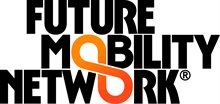The Future Mobility Network B.V.

What is the name of your institution/company?
The Future Mobility Network B.V.
What products or services do you provide?
The Future Mobility Network is dedicated to realizing sustainable mobility solutions for the future. Through connectivity, consultancy, development, and research of innovative methods, we break barriers and overcome significant challenges.
We tackle large-scale projects concerning infrastructure, such as the Van Brienenoord Bridge. Additionally, we manage various innovative mobility solutions, from automated shuttles to car-sharing initiatives. For example, shuttles have been deployed at ESA Estec, and delivery robot Rosie has been used to deliver groceries to students.
Furthermore, we offer consulting services to clients seeking advice on determining the best locations for mobility hubs in urban or rural areas. We assist with real estate and strategic inquiries to promote active mobility through design principles at both area and building levels, aiming for a reduced reliance on cars. In managing programs, our approach is to provide immediate solutions while ensuring long-term sustainability.
We also certify real estate based on its suitability for sustainable mobility and investigate whether this enhances the value of the property. We introduce bookable parking spaces through Coding the Curbs and advocate for remotely operated shared cars.
Where are you active within the FNS program (program lines, work packages) and what is your contribution?
FMN advises and implements mobility solutions with governments and businesses. We bridge the gap between the needs of governments, such as those in mobility management and traffic management, often as part of area development. In the FNS program, we bring our knowledge of user and administrator needs and intertwine developments in the fields with the evolution of 6G. This is done in program line 3, within work package Wireless Detection, where we, in collaboration with partners such as Vialis and the municipality of Rotterdam, design smart intersections and explore the extent to which current detection loops in roads can be replaced by wireless detection based on 6G.
Why are you participating in the FNS program?
Future Mobility is Connected!
Mobility of people and goods, on land, at sea, and in the air, is part of the digital revolution. Cars are becoming computers on wheels, drones deliver medicines, and ferries operate automatically.
The physical infrastructure, such as roads, intersections, hubs, and ports, is also becoming digitized. Without people in the vehicle, vessel, or aircraft, the first steps often involve remote operation. This is well-known for bridges and locks but is now also applicable to shared cars and logistics robots. Without reliable, communicative infrastructure, these connected, automated systems are not safe. Communication with the user and the logistics chain also relies on reliable and fast communication. With 5G, we saw an increase in speed, and slicing offered a way to prevent delays on busy networks. With 6G, we are entering the next stage, operating on a different frequency, where object detection can become part of the digital infrastructure. 6G will form the basis for future mobility solutions.
